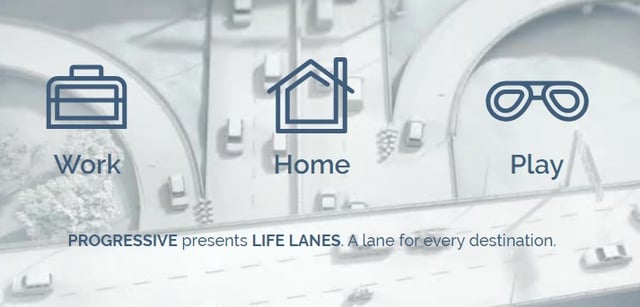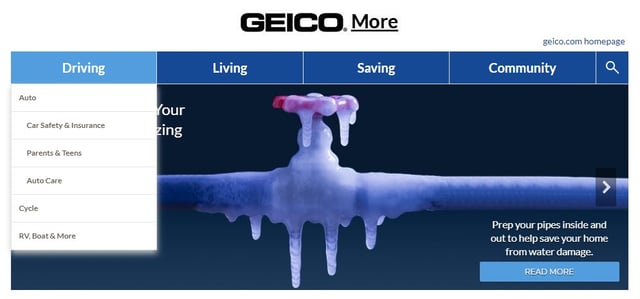Let’s be honest: to the average Web browser, the insurance industry can come across rather boring.
Packed with brain-bending fine print and wordy terms that are totally foreign to the everyday consumer, insurance doesn’t seem like a field that lends itself to blogging. After all, why would consumers read a blog about insurance in the first place?

You may be surprised, then, to discover that with the right combination of creativity and hard work, you can devise a blog strategy that not only gains your company expert status, but helps draw the eyes of Web browsers who could be your next customers. In fact, blogging should be a fundamental element of your marketing plan. According to HubSpot research, companies who post 16 or more blog posts per month receive nearly 3.5 times the traffic as those who post only 0 to 4 times per month.
If your business sells insurance products that cater to the individual consumer – think car insurance, life insurance, home insurance, travel insurance and other types of individual policies – a concrete strategy can transform your blog from an unused corner of the Web into a valuable customer resource. Keep reading to learn how to master your consumer-facing content development strategy.
Kick-Start Your Content Development Plan: Defining Your Goals
To begin, ask the following question: What should our blog accomplish?
Setting a broad goal – “to position our insurance agency as an industry authority” – can provide general direction, but you must set specific goals, too, as they offer a much more precise focus, making it easier to drive productivity.
This is especially important if your agency offers a variety of insurance types. Writing a post or two here and there about life insurance or vehicle insurance is unlikely to provide any real benefit to your blog as a whole. Instead, consider each product you offer, and brainstorm a variety of blog topics based on each one. Then, set a goal for each particular branch of your business, and set out to achieve it by creating lots of in-depth, informative content targeted precisely to consumers that may be seeking these types of policies.
Building Your B2C Insurance Blog Strategy
Once you’ve set your goals, it’s time to develop your blog strategy. It’s a complex, time-consuming process, but ultimately, it’ll pay off by providing your insurance company with a sense of organization as you refine your online presence.
Look for Inspiration
Perhaps the easiest way to begin developing your blog strategy is by checking out the blogs of your competitors on both a local and international level. Seeing the competition that you’re dealing with can not only give you a good idea of just how good your content has to be to stand out, but it can also provide you with inspiration to fuel your blog in its formative stages.
To make the task easier, we’ve compiled two real-deal examples of insurance companies – both major industry players – that really know what they’re doing when it comes to content development.

Example 1: Progressive
How They Do It: Progressive Insurance offers an in-depth blog called Life Lanes. The company is known for auto insurance, but the blog takes a comprehensive approach. In keeping with its motto – “A lane for every destination” – Progressive’s blog offers everything from home remodeling tips to advice on outfitting your new apartment with affordable essentials. Sure, the topics are broad, but they’re all easy to relate back to what is likely one of the company’s overall blogging goals: boosting the sales of their insurance products.
What You Can Learn: Progressive has mastered the art of identifying their consumers’ pain points and addressing them in a way that subtly guides each consumer along the purchase path with expert storytelling and lifestyle-centered content.

Example 2: Geico
How They Do It: Like Progressive’s Life Lanes, Geico More covers a range of insurance-related topics, but their blog is more simplistic. Where Geico proves especially effective is their navigation system. Across the top of the blog, browsers can choose between four main topics – Driving, Living, Saving and Community. Each primary topic can be clicked on, or instead, you can select one of each topic’s many subcategories for more personalized results.
What You Can Learn: While you may feel overwhelmed trying to create content that addresses the many insurance products your company offers, Geico proves that it’s not impossible to cover everything in one clean, easily navigable space.

Create Compelling Content
Once you have a good idea of what the insurance blogs in your industry are doing, you’ll likely find it easier to develop viable blog topics. There’s no shame in using the content ideas of another company as inspiration, especially if you believe you can take those ideas and expand them even further, adding your own unique insights and commentary for improved SEO impact.
Not sure where to start? Consider the three stages of the buyer’s journey – awareness, consideration and decision – and craft content that caters to each one while supporting your blogging goals. Here, we’ll present a few insurance blog ideas for each stage.
Awareness Stage of the Purchase Path
The beginning of the buyer’s journey sees consumers researching a problem, and as an insurance agency, this stage presents an opportunity for your company to provide answers. Here’s how you can appeal to consumers who may not yet have realized they even need your product:
- Provide “how-to” tips: The “how-to” headline has long been lauded as a premier option for traffic generation, because web users are simply hungry for knowledge. But how can you take advantage of this approach with your consumer-facing insurance content strategy? It all depends on your product. If you’re selling auto insurance, consider posts like “How to Protect Your New Car During a New York Winter.” Selling homeowners’ insurance? A post entitled “How to Prepare for a Fire” might attract viewers intent on keeping their possessions safe.
- Deliver valuable statistics with infographics: In a single year, baggage costs airlines more than $2 billion, more than 2.4 million injuries are attributed to traffic-related incidents and more than 300,000 house fires take place in the U.S. alone. What do these statistics have in common? They’re jarring, they’re true and they’re relevant to consumers who may benefit from different types of personal insurance.
- Explain the jargon: As we’ve mentioned, insurance isn’t always easy to understand. Consider a recurring series where a member of your team explains what certain highly searched insurance terms mean in simplified, accessible language. These entries could even eventually be compiled into an extensive insurance glossary to maximize your SEO clout and let leads know that your company is a reliable source of information.
Consideration Stage of the Purchase Path
At the middle of the funnel, consumers have identified their problem – they’re just looking for the best way to solve it. That means weighing the solution your company presents against other options. The following types of content should come in handy at this critical stage:
- Target reader uncertainty: Some insurance products are pricey, and your audience may feel like they can skip out. By tapping into this tendency to hesitate – try writing headlines like “Do I Really Need Life Insurance?” – you may be able to convince former naysayers that they do, in fact, really need life insurance.
- Help out with checklists: Selling travel insurance? Assemble a vacation checklist. Dealing with health insurance? Provide a checklist detailing how to keep safe during flu season. Or if you’re selling homeowner’s insurance, post a yearly maintenance checklist. These resources can benefit a variety of consumers and establish your company as an authority – plus, you can include your insurance product as an element on the checklist to help separate your company from the crowd.
Decision Stage of the Purchase Path
At the end of the insurance buyer’s journey, consumers have decided that insurance is the right way to go. They just need a compelling reason to choose your policy over those offered by your competitors. Here’s how to show consumers that they should invest in your agency’s policies:
- Prove your worth with case studies: Can you prove the benefits of your product? Don’t hesitate to create blog content that thoroughly illustrates a real-life situation where your company’s insurance policy came in handy.
- Let user reviews and testimonials speak for themselves: As it turns out, 93% of consumers take online reviews into consideration when making a purchase decision, so allowing real-life customers to leave feedback on your website may play a key role in showcasing the worth of your business. Otherwise, consider working testimonials into your decision-stage marketing materials as another opportunity to showcase a customer’s love for your product.
Professional Content Writing Services For Insurance Blogs
Building a blog strategy is tough, but with these tips – and our comprehensive 2018 blog strategy guide – your company can take its consumer-facing online presence to the next level.
Need a little help? Look no further than Virtucom Group’s professional content writing services. Having served a wide range of industries, including B2C and B2B insurance, we’re confident that our team of expert writers can provide top-tier content strategy assistance and professionally written content to keep you ahead of the game.






